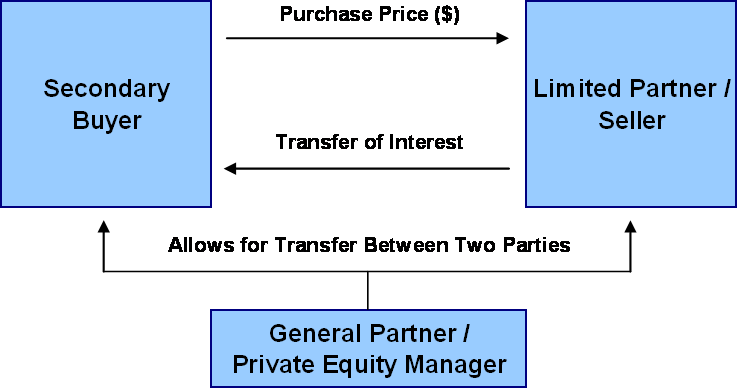Introduction
Secondaries private equity is one of the fastest-growing segments in private markets. Traditionally, private equity was known for its illiquidity — investors committed capital for 10 to 12 years with little flexibility. But secondaries are changing that equation.
In recent years, limited partners (LPs) and general partners (GPs) alike have increasingly turned to secondary markets to create liquidity, rebalance portfolios, and manage exposures. Secondaries are no longer a niche — they are becoming a core component of private equity.
What Are Secondaries in Private Equity?
In simple terms, private equity secondaries involve the buying and selling of existing fund interests before the fund’s maturity. Instead of waiting for a full fund liquidation, LPs can sell their stakes to secondary buyers, who step into the fund and continue holding the portfolio companies.
“Secondaries give LPs flexibility without forcing GPs to sell portfolio companies prematurely.”
In recent years, the secondary market has evolved far beyond simple LP sales, including GP-led transactions, continuation funds, and complex restructuring deals.
Why the Secondaries Market Is Booming
Several forces are driving the rapid growth of secondaries private equity:
- LP liquidity needs: Some investors need to rebalance or reduce PE exposure due to changing asset allocations.
- Denominator effect: After public markets fell in 2022–2023, some LPs found themselves over-allocated to private assets.
- GP flexibility: GPs use secondaries to extend ownership of strong-performing assets via continuation vehicles.
- Pricing transparency: As the market grows, pricing has become more sophisticated, improving confidence for buyers and sellers.
- Dedicated secondary funds: Specialized managers now raise large funds focused solely on secondaries.
Key Types of Private Equity Secondaries
The secondaries market has become increasingly complex, with multiple transaction types:
1️⃣ LP-Led Secondaries
- LP sells its interest in an existing fund.
- Buyer steps into the LP’s position and receives future cash flows.
- Common when LPs need early liquidity.
2️⃣ GP-Led Secondaries (Continuation Funds)
- GP creates a new vehicle to roll over one or more portfolio companies.
- Existing LPs may sell or roll into the new vehicle.
- Allows GPs to continue managing high-quality assets beyond original fund life.
3️⃣ Tender Offers & Portfolio Sales
- Bulk sale of multiple fund interests.
- Often used by larger institutions to streamline portfolios.
4️⃣ Structured Secondaries
- Custom transactions involving debt, preferred equity, or hybrid structures.
- Tailored to address specific liquidity needs or portfolio constraints.

Advantages for Limited Partners
For LPs, secondaries private equity offers several clear benefits:
- Liquidity in an otherwise illiquid asset class.
- Portfolio rebalancing as market conditions change.
- Ability to lock in gains or manage risk without waiting for fund termination.
- Participation in mature portfolios with more visibility into underlying assets.
“Secondaries give LPs the rare combination of liquidity and visibility in private equity.”
Benefits for General Partners
GPs also increasingly use secondaries as a tool for:
- Extending ownership of outperforming assets.
- Offering optional liquidity to LPs while continuing value creation.
- Managing fund maturities and exit timing.
- Building stronger relationships with long-term capital providers.
Continuation funds, in particular, have become a favored tool for GPs managing high-quality assets they don’t want to exit under time pressure.
Risks and Considerations
Despite its growth, secondaries private equity still carries risks:
- Pricing complexity: Accurately valuing mature private equity portfolios requires detailed due diligence.
- Information asymmetry: Buyers may have less information than GPs about the underlying companies.
- GP incentives: In GP-led transactions, conflicts of interest can arise between GPs and selling LPs.
- Market liquidity cycles: While secondaries offer liquidity, market demand can fluctuate sharply during financial stress.
Sophisticated underwriting and strong manager relationships are key to mitigating these risks.
The Rapid Growth of Secondaries Funds
Dedicated secondaries funds have grown substantially, with several managers raising multi-billion-dollar vehicles. These funds specialize in:
- Sourcing complex transactions.
- Providing pricing discipline.
- Managing portfolio diversification across vintages, sectors, and geographies.
- Negotiating GP-led transactions with proper alignment.
In 2025, some analysts project that secondaries could represent 15-20% of total private equity deal volume, a dramatic increase from just a decade ago.
Conclusion
Secondaries private equity has evolved from a niche backwater into one of the most dynamic segments of private markets. As LPs demand greater flexibility and GPs seek to optimize holding periods, secondaries offer solutions that benefit both sides.
For anyone serious about understanding private equity today, mastering the secondaries market is no longer optional — it’s essential.
Other cool articles
- Swiss SMEs and Private Equity: Why Switzerland’s Mid-Market Is a Target for Global Funds
- Secondaries in Private Equity: Why LP Liquidity Is Creating a New Market Segment
- Permanent Capital Vehicles: The Next Evolution of Private Equity?
- Swiss Safe Haven: Why Switzerland Remains a safe bet for Investors
- Investing 2025: How Young Investors Should Navigate Higher Rates and Market Volatility
- BRICS Currency 2025: Is De-Dollarization Finally Happening?
- Federal Reserve Interest Rates 2025: How Global Markets Are Adapting

